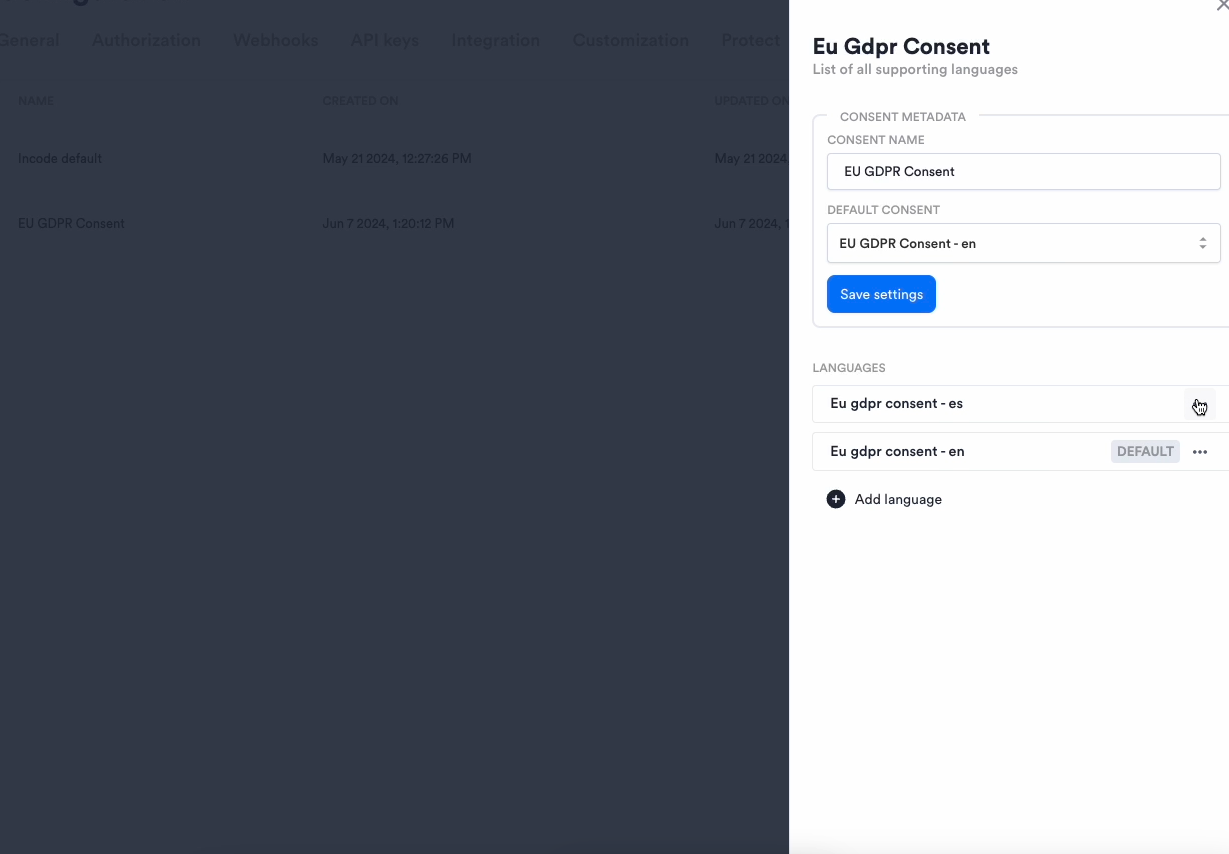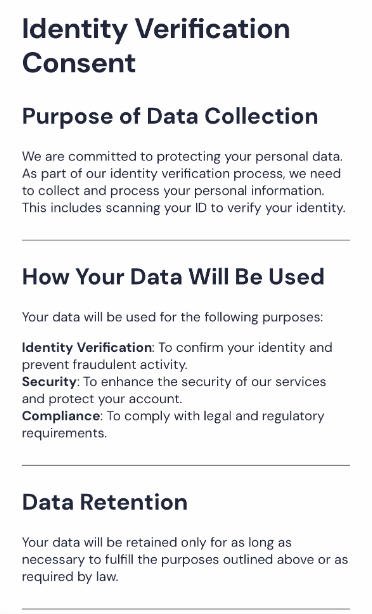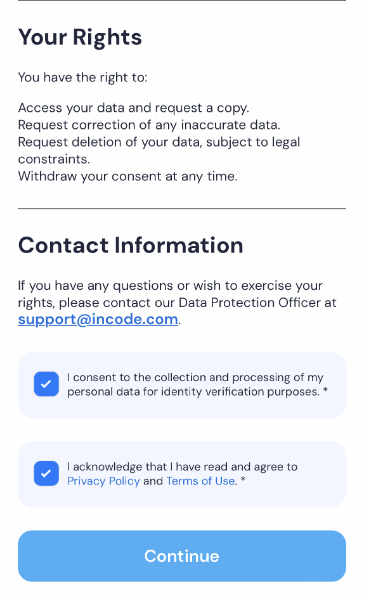Combined Consent
This component will ask for permission from the user to collect information and photos requested during the onboarding.
This guide will walk you through setting up consents in the Incode Omni dashboard, configuring the consents for different languages, and how these consents appear to the end-users during the onboarding process.
Organizations can tailor the consent modules to fit their needs, including custom titles, terms, and the ability to specify which consents are mandatory. This flexibility ensures that the consent process is relevant and compliant with specific legal requirements.
By supporting markdown for detailed consent descriptions and enabling localization, the Incode consent module makes it easier for users to understand what they're consenting to, in a language they're comfortable with. The interface is designed to be intuitive, with a clear display of mandatory and optional consents, and a straightforward process for giving or withholding consent.
Integration
The Combined Consent module is designed to collect user consent for data collection and processing. Incode has provided a default consent language which is legally accepted world wide. It is important for compliance and regulation purposes that user is informed about data collection and processing and their consent provided at the start of any identity verification journey.
Platform support: Web (Released), iOS, Android, Reach Native (Coming soon)
Module Configuration
Adding consent module to the Workflow is simple. It is usually the first module that is added to workflow tree.
- Choose Combined Consent from the list of modules.
- Select the desired consent configuration from the list of predefined consents.
- Save the configurations to ensure they are applied to the specific workflow node.
Workflows can support adding multiple consents nodes. For example, if user needs to perform additional verification steps, additional, more specific consent might be requested. All consents collected will be displayed on Single Session. Note: Flows can support only one consent module per flow.

Defininin a custom consent
1. Accessing the Consent Configuration
- Log into the Incode Omni dashboard.
- Navigate to Configuration -> Consents. This is where all the languages, texts, and other configurations are defined.
2. Defining New Consents
-
Click on Add new consent to create a new consent.
-
Fill in the required fields:
-
Consent Name: Name of the consent (e.g., EU GDPR Consent).
-
Default Consent: Choose the default language consent from the dropdown.

-
3. Configuring Consent Content
- Select the language for the consent. You can add multiple languages as needed.
- Configure the consent content by filling in the following fields:
- Title: The title of the consent form.
- Content: Detailed information about the consent, which supports Markdown formatting for better readability and structure. For supported list of markdown tags, see below.
- Define the checkboxes for the consents:
- Consent Text: The text that describes what the user is consenting to.
- Make Optional: Decide if the consent is mandatory or optional. Users must check mandatory consents to proceed. NOTE: Only text and hyperlinks can be used for checkbox content.
Supported Markdown and HTML Tags
- Hyperlinks:
[DISPLAY_TEXT](https://your.link.com) - Emphasis:
<strong>for strong importance or bold text, and<em>for emphasized or italic text. - Headings:
<h1>,<h2>,<h3>for heading levels, with<h1>being the largest. - Paragraphs:
<p>defines a paragraph. - Line Breaks:
<br>inserts a line break. - Horizontal Rule:
<hr>represents a horizontal line. - Lists:
<ul>,<ol>,<li>for unordered (bullet) and ordered (numbered) lists. - Markdown Shortcuts:
*for bullet points,*text*for italic text,**text**for bold text,#, ##, ###for headings.

End-User Experience
When users go through the onboarding process, they will be presented with the configured consent forms. The interface will display:
- A clear title.
- Detailed consent information.
- Mandatory and optional consent checkboxes.
- A "Continue" button that becomes enabled only after all mandatory consents are checked.


Single Session Dashboard Results
User consent status is visible on Single Session under Other tab.

Updated about 2 months ago
